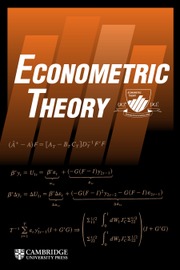No CrossRef data available.
Article contents
CONDITIONAL LIKELIHOOD RATIO TEST WITH MANY WEAK INSTRUMENTS
Published online by Cambridge University Press: 15 April 2025
Abstract
This article extends the validity of the conditional likelihood ratio (CLR) test developed by Moreira (2003, Econometrica 71(4), 1027-–1048) to instrumental variable regression models with unknown homoskedastic error variance and many weak instruments. We argue that the conventional CLR test with estimated error variance loses exact similarity and is asymptotically invalid in this setting. We propose a modified critical value function for the likelihood ratio (LR) statistic with estimated error variance, and prove that our modified test achieves asymptotic validity under many weak instruments asymptotics. Our critical value function is constructed by representing the LR using four statistics, instead of two as in Moreira (2003, Econometrica 71(4), 1027-–1048). A simulation study illustrates the desirable finite sample properties of our test.
- Type
- ARTICLES
- Information
- Copyright
- © The Author(s), 2025. Published by Cambridge University Press
Footnotes
We are grateful to Naoto Kunitomo, Anna Mikusheva, Peter Phillips, and anonymous referees for helpful comments. Y.M. acknowledges financial support from the JSPS KAKENHI (23K01331).


